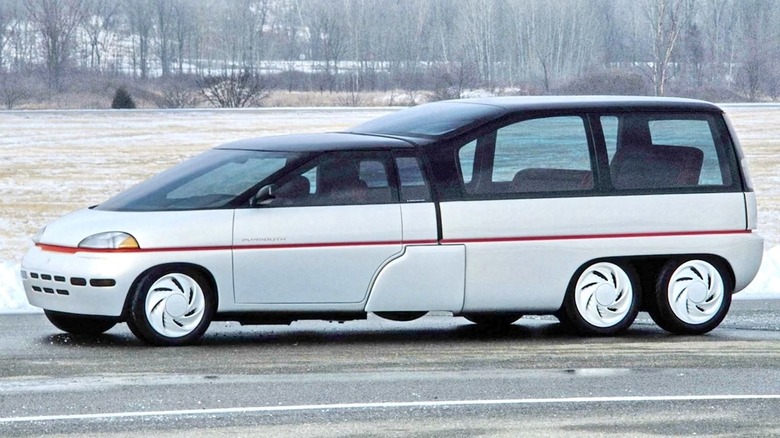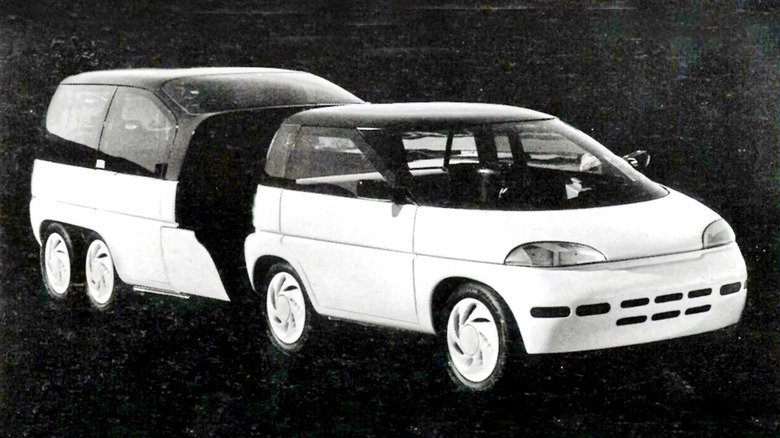This Over The Top Minivan Could Be The Worst Concept Car We've Ever Seen
If Plymouth's concept minivan reminds you of something, then you were probably a kid who watched a children's science fiction TV show that aired on CBS in 1976 called "Ark II." The vehicle, which a central figure of the show called "the Ark II vehicle," is very reminiscent of the Plymouth Voyager III.
Whereas the Lamborghini Genesis might have been the coolest-looking minivan ever made, the Voyager III ... maybe not so much. While it certainly looked odd, the fact that the Voyager III is actually two cars in one might make it even more futuristic than the Ark II.
Plymouth started with a compact three-seat car roughly the size of a Geo Metro that could be used as a daily commuter. Under the hood was a 1.6-liter 4-cylinder propane-fueled engine (via Chicago Auto Show).
But when it was time to pack up the family and hit the road for a grand adventure, you could literally back the little minicar up to a modular rear unit and plug it into a much larger seating compartment typically associated with a van. It truly allowed owners to enjoy the advantages of two very different vehicles simultaneously (via Hemmings).
According to Bob Lutz, president of Chrysler at the time, the whole idea behind the Voyager III was to let people leave two-thirds of their vehicle at the house when they had to go into urban settings, which in turn would save fuel and free up parking spaces (via Hemmings).
Plymouth built a literal transforming minivan concept
Tom Gale, who would go on to design the Dodge Viper and Plymouth Prowler, came up with the Voyager III plans (via 95Octane). The rear unit had seating for an additional five passengers, and it came with some rather unique features, including its own 2.2-liter four-cylinder engine. Interestingly, the rear engine didn't need to be used, but given the added weight, the 1.6-liter probably didn't provide enough horses in most situations. Still, it was a nice feature to have.
Both engines were electronically linked and had the same combined horsepower as a small V8. Linking the two engines allowed the Voyager III to have all-wheel drive. When the two units were hooked together, the rear wheels on the minicar retracted up into the frame, and aerodynamic side skirts slid across the top to keep down drag (via Hemmings).
The front minicar portion was 104 inches long, while the back half measured 94 inches, for a total length of 198 inches (via All Car Index). By comparison, a Jeep Grand Wagoneer measured almost 215 inches (via 95Octane).
Even though Plymouth displayed the car all along the auto show circuit in 1990, it admitted it was a good 10 years "from practical implementation," and Lutz himself reportedly said the chances of it getting made weren't great "because it is very expensive" (via Hemmings). After the 1990 show year, the Voyager III — much like the "Ark II" in 1976 — faded into oblivion.

